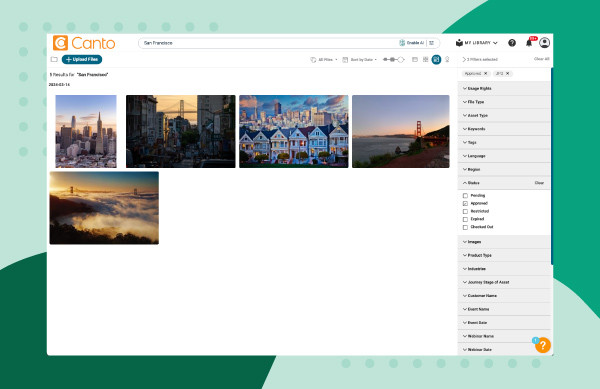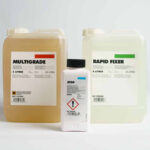Are you looking to efficiently organize, protect, and analyze your digital images? Understanding and checking photo metadata is crucial, and dfphoto.net provides the resources you need to master this skill. Photo metadata, often called image metadata or EXIF data, offers valuable information about your photos, from camera settings to copyright details. Learning how to access and interpret this data will unlock new possibilities for managing your digital assets and improving your photographic techniques. Let’s dive into the world of digital image information, EXIF data, and photo analysis.
1. What Is Photo Metadata and Why Is It Important?
Photo metadata is the embedded information within a digital image file that provides details about the photo. It acts as a digital fingerprint, carrying essential information about the image’s origin, characteristics, and usage rights. This information is invaluable for photographers, editors, marketers, and anyone who works with digital images.
Here’s why photo metadata is so important:
- Organization: Metadata enables you to categorize images based on criteria like location, keywords, and date. This makes navigating large collections of images significantly easier.
- Searchability: Descriptive tags and keywords allow you to quickly find specific images without manually sifting through thousands of files.
- Copyright Management: Copyright information embedded in metadata protects the rights of the image owner and provides clear guidelines for copyright-compliant image usage.
- Technical Analysis: Photographers can use metadata to analyze camera settings and make informed decisions for post-processing and improving future shoots.
- Context: Metadata ensures that important details about the image, such as the time and place it was taken, are preserved and accessible, maintaining the historical and contextual value of the photo.
 Digital camera showing EXIF data parameters such as focal length, iso and date
Digital camera showing EXIF data parameters such as focal length, iso and date
2. What Information Is Stored in Photo Metadata?
Photo metadata often includes a wide range of information, which can be broadly categorized as follows:
- Basic Information:
- File name
- File size (in bits and pixels)
- File type (JPEG, PNG, TIFF, etc.)
- Creation date and time
- Last modified date and time
- Camera Settings:
- Camera model
- Lens model
- Focal length
- Aperture
- Shutter speed
- ISO speed
- Exposure compensation
- Metering mode
- White balance
- Flash mode
- Location Information:
- GPS coordinates (latitude and longitude)
- Altitude
- Address (if available)
- Descriptive Information:
- Title
- Subject
- Keywords
- Description
- Author
- Copyright information
- Creator
- Copyright and Licensing Information:
- Copyright notice
- Copyright owner
- Usage terms
- License URL
- Rights usage terms
- Other Information:
- Software used to create or edit the image
- Color profile
- Thumbnail image
This comprehensive data set provides a complete picture of the image, making it easier to manage, protect, and utilize effectively.
3. What Are the Different Categories of Photo Metadata?
Metadata can be categorized into three main types, each serving different purposes and providing different kinds of information:
3.1. Descriptive Metadata
Descriptive metadata provides details about a resource to aid in its discovery and identification. This includes elements like the title, subject, author, keywords, and description. According to research from the Santa Fe University of Art and Design’s Photography Department, descriptive metadata is crucial for enhancing the searchability of images and improving their visibility in online platforms. Descriptive metadata is used in settings ranging from libraries and museums to digital asset management systems, helping users find relevant information or resources by searching or browsing.
3.2. Structural Metadata
Structural metadata provides insights into a resource’s organization and format. It outlines the composition of complex objects, illustrating, for example, the sequence of pages that create chapters in a book or the relationship among collections of images, texts, and datasets. This type of metadata is crucial for digital resources, enabling systems to present or navigate through complex data sets effectively.
3.3. Administrative Metadata
Administrative metadata supplies details essential for managing a resource, including its creation time and method, file format, and information on access and rights.
Administrative metadata can be further divided into several sub-types, including:
- Technical Metadata: Details about the technical aspects of a resource, including file types, compression algorithms, and file sizes. It’s crucial for digital preservation and ensuring continued access to digital files.
- Preservation Metadata: Information needed to maintain and preserve a digital resource over time. It includes details about the digital object’s history and condition and any actions taken to ensure its preservation.
- Rights Metadata: Information about intellectual property rights and restrictions on access or use of the material. It helps organizations manage legal aspects of digital asset usage.
By organizing and utilizing these metadata categories, institutions and individuals can ensure the effective use, management, and preservation of information resources.
4. What Are the Most Common Photo Metadata Formats?
Several photo metadata formats are used to store and manage metadata information in digital image files. Here are some of the most common:
4.1. EXIF (Exchangeable Image File Format)
EXIF is a standard format for storing interchange information in digital photography. It includes details about the camera settings, such as shutter speed, aperture, ISO setting, and date/time the photo was taken, as well as information about the image itself like orientation. EXIF data is automatically embedded by most digital cameras and smartphones.
4.2. IPTC (International Press Telecommunications Council)
Developed for the press industry, IPTC metadata includes information to catalog and exchange media. It covers a broad range of details such as copyright information, the creator of the image, contact information, and content description. IPTC metadata is commonly used by news organizations and media professionals.
4.3. XMP (Extensible Metadata Platform)
Created by Adobe, XMP serves as a framework for handling and preserving both standardized and proprietary metadata. It is embedded into a digital image file and can include a vast range of information about the file, from basic metadata to rights management information. XMP is highly flexible and can be used with various file formats.
4.4. DNG (Digital Negative)
DNG is a raw image file format created by Adobe, designed for use in digital photography. DNG metadata includes all the information found in EXIF, plus additional details specific to raw files, such as camera calibration data. DNG is an open-source format intended to ensure long-term preservation of digital images.
4.5. TIFF (Tagged Image File Format)
Primarily used for storing raster graphics and images, TIFF files can include a variety of metadata types stored in tags. These can describe image dimensions, resolution, and image data arrangement, among others. TIFF is a lossless format, making it ideal for archival purposes.
4.6. PNG (Portable Network Graphics)
PNG is a file format for raster graphics that allows for data compression without losing quality. PNG files can contain metadata such as textual information (titles, author, description, etc.) and image-specific data like gamma values, color profiles, and transparency information.
4.7. JPEG (Joint Photographic Experts Group)
The JPEG format is a widely utilized technique for compressing digital images in a lossy manner. JPEG files can include EXIF, XMP, and ICC profile data, providing a wide range of information from camera settings to copyright and licensing information.
4.8. GIF (Graphics Interchange Format)
A bitmap image format that supports animations. GIF files can include simple textual metadata, but their support for detailed metadata is limited compared to other formats.
Each of these formats serves different purposes and has its own set of capabilities and limitations in terms of the type and amount of metadata they can store.
5. How Can You Access and View Photo Metadata on Mac?
For Apple users, macOS makes accessing file metadata very simple:
- Locate the image you want to work on in ‘Finder’.
- Highlight the intended file using your mouse or keyboard and right-click.
- Click ‘Get Info’.
- A new window with relevant details will open. Cycle through the different tabs at the top to find the information needed.
 Porto houses and photo metadata displayed using a Mac
Porto houses and photo metadata displayed using a Mac
6. How Can You Access and View Photo Metadata on Windows?
Accessing photo metadata on Windows is also straightforward:
- Locate and right-click the intended digital image file.
- Select ‘Properties’, and a small new window will open.
- Click the ‘Details’ tab at the top of the popup window.
- Scroll down until you find the desired metadata.
 Blue Porto houses and photo metadata accessed using Windows
Blue Porto houses and photo metadata accessed using Windows
7. What Online Tools Can You Use to Check Photo Metadata?
Several online tools allow you to view photo metadata without installing any software. These tools are particularly useful for quickly checking metadata on images you find online or receive from others. Here are a few popular options:
- Metadata2Go: A web-based tool that allows you to upload an image and view its metadata in a clean, organized format. It supports various metadata formats, including EXIF, IPTC, and XMP.
- Online EXIF Viewer: This tool specializes in displaying EXIF data from JPEG images. It provides a simple interface for uploading and viewing the metadata.
- Jeffrey’s Image Metadata Viewer: A more advanced tool that offers detailed information about the image’s metadata, including camera settings, GPS coordinates, and copyright information.
- Focal Point: It allows you to view, edit and extract embedded metadata.
- Aspose: With Aspose you can extract metadata from image files like JPG, PNG, BMP, TIFF, GIF, and PSD.
These online tools provide a convenient way to access and analyze photo metadata, making it easier to manage your digital images effectively.
8. Can You Edit a Picture’s Metadata?
Yes, image metadata can be easily edited. To edit the metadata of a digital photo on either Mac or Windows, follow these steps:
- Navigate to the metadata of the file you want to edit as described above.
- Locate the category that needs editing (name, date, author, etc.).
- Underneath the ‘Value’ tab, you’ll be able to input the new information (click and type).
9. How Can You Use a Metadata Editor?
While manual editing is possible, a metadata editor offers more advanced features and efficiency. These tools are designed to handle large numbers of edits and provide greater control over the metadata. Here are some popular metadata editors:
- Adobe Bridge: A powerful tool for managing and editing metadata in various file formats, including JPEG, TIFF, and RAW. It integrates seamlessly with other Adobe Creative Cloud applications.
- ExifTool: A command-line tool that supports a wide range of metadata formats. It’s highly versatile and can be used for batch processing and advanced metadata editing tasks.
- Photo Mechanic: A professional photo browser and metadata editor that is popular among photographers and photojournalists. It offers fast performance and advanced features for managing large photo libraries.
- XnView MP: A free image viewer and converter that also includes basic metadata editing capabilities. It supports a wide range of file formats and is available for Windows, macOS, and Linux.
- Lightroom: This software helps you organize, edit, store, and share your photos across any device.
When choosing a metadata editor, consider the types of image files you will be working with, the extent of editing tasks required, and your budget.
10. Why Might You Need to Edit or Remove Metadata?
There are several reasons why you might need to edit or remove metadata from your photos:
- Correcting Errors: If the metadata contains incorrect information, such as the wrong date or time, you can edit it to ensure accuracy.
- Adding Missing Information: You can add missing metadata, such as a title, description, or keywords, to improve organization and searchability.
- Protecting Privacy: You can remove sensitive metadata, such as GPS coordinates, before sharing images online to protect your privacy.
- Copyright Management: You can update copyright information to reflect changes in ownership or usage rights.
- Reducing File Size: Removing unnecessary metadata can reduce the file size of images, making them easier to share and store.
- Anonymity: If you want to share images without revealing personal or technical details, you can remove metadata to ensure anonymity.
11. What Is a Digital Asset Management (DAM) Platform and How Does It Help Manage Metadata?
Digital asset management (DAM) is the ongoing process of keeping a check on the digital content of a business or organization. This digital content is in the form of text, audio files, videos, and pictures.
A digital asset management platform like Canto, offered by dfphoto.net, stores and manages digital assets such as images, videos, documents, and other media files. It lets users easily organize, search, retrieve, and share these assets, streamlining workflows and improving organizational collaboration.
It’s a smart way to address the content chaos resulting from today’s image and digital content production demands.
DAM software can help you manage, search, and edit metadata of the different files you store, as well as view thumbnails for easy visibility of the file’s content.
12. How Does Canto Simplify Metadata Management?
Canto makes image metadata management easy with its intuitive interface and powerful features:
- Search: Type your search criteria into the search bar.
- Filter: Scroll through the tabs in the filter pane to narrow your search criteria.
- View: Click on the image you are searching for and the embedded image metadata will appear in the right pane. Click the double arrows at the top right to display all embedded image metadata.
- Details: Scroll down the page and find metadata details like the date created, dimensions, and resolution.
 Searching San Fransisco photos in Canto
Searching San Fransisco photos in Canto
 Searching metadata with Canto filters
Searching metadata with Canto filters
 San Fransisco houses and photo metadata displayed in Canto
San Fransisco houses and photo metadata displayed in Canto
 San Fransisco houses and all image metadata using Canto
San Fransisco houses and all image metadata using Canto
13. How Does Canto’s AI Visual Search Enhance Metadata Management?
For users who have incorrect, incomplete, or missing metadata on their photos or those who simply wish to reduce metadata management, Canto’s AI Visual Search is the answer. Canto’s AI-powered search uses natural language when visually scanning your images inside your Canto library to find the most relevant photos without relying on metadata.
There’s no need for complex search terms or specific keywords used for a normal photo metadata search.
AI Visual Search has no learning curve. You can search your images similarly to how you search your favorite internet search engine.
The best part of using AI Visual Search is finding old, forgotten, and valuable photography that can be reused to create more value for you and your organization.
14. How Does Metadata Impact Image SEO?
Metadata plays a significant role in how search engines like Google understand and rank images. Optimizing your image metadata can significantly improve your website’s SEO and drive more traffic to your content.
Here’s how metadata affects image SEO:
- File Name: Use descriptive file names that include relevant keywords. For example, instead of “IMG_1234.jpg,” use “santa-fe-opera-house.jpg.”
- Alt Text: Alt text (alternative text) is used to describe the image to search engines and screen readers. It’s crucial for accessibility and SEO. Use concise, descriptive alt text that includes relevant keywords.
- Title: The image title is another opportunity to provide context to search engines. Use a descriptive title that includes relevant keywords.
- Caption: The caption is the text that appears below the image. Use a caption to provide additional information about the image and include relevant keywords.
- Description: The description is a more detailed explanation of the image. Use a description to provide context and include relevant keywords.
- Keywords: Include relevant keywords in the metadata to help search engines understand the image’s content.
- Location: If the image was taken at a specific location, include the GPS coordinates in the metadata. This can help search engines rank the image for local searches.
By optimizing your image metadata, you can improve your website’s SEO, drive more traffic to your content, and make your images more discoverable online.
15. How to protect copyright with Photo Metadata?
Protecting your copyright is essential for any photographer. Metadata can play a crucial role in safeguarding your intellectual property rights.
Here’s how to use metadata to protect your copyright:
- Copyright Notice: Include a clear copyright notice in the metadata, stating that the image is protected by copyright and specifying the copyright owner.
- Copyright Owner: Specify the copyright owner’s name or organization in the metadata.
- Usage Terms: Include information about how the image can be used, such as whether it can be used for commercial purposes or whether it requires attribution.
- License URL: Provide a link to a license agreement that outlines the terms of use for the image.
- Rights Usage Terms: Include detailed information about the rights associated with the image, such as whether it can be modified, distributed, or used in derivative works.
By including this information in the metadata, you can make it clear to others that the image is protected by copyright and specify the terms of use.
16. What Are the Legal Considerations for Altering or Removing Metadata?
Altering or removing metadata, especially copyright information, can have legal consequences. It’s important to understand the legal implications before making any changes to the metadata.
Here are some legal considerations to keep in mind:
- Copyright Infringement: Altering or removing copyright information from an image you don’t own can be considered copyright infringement.
- Liability for Infringement: You can be held liable for copyright infringement if you alter or remove copyright information from an image you don’t own.
- Digital Rights Management (DRM): DRM tools can help store and track essential digital rights metadata.
- Expert Legal Advice: Always get expert legal advice if you’re unsure about copyright or digital rights issues.
17. FAQ: Frequently Asked Questions About Photo Metadata
17.1. How can I ensure that my photo metadata is secure and not exposed when sharing images online?
To avoid sharing metadata you don’t want to make public, you should consider stripping sensitive information like location data before uploading or sharing. Some platforms may also automatically remove metadata for privacy reasons.
17.2. How does metadata affect the SEO of images when uploaded to websites or social media?
For SEO, metadata like keywords, alt text, and titles can significantly impact how images are indexed by search engines, making them more discoverable online. Properly tagging and optimizing this data enhances visibility.
17.3. Can I add custom metadata fields to my photos?
Yes, many metadata editors allow you to add custom metadata fields to your photos. This can be useful for storing specific information that is not included in the standard metadata fields.
17.4. How do I batch edit metadata for multiple photos at once?
Most metadata editors offer batch processing capabilities that allow you to edit metadata for multiple photos at once. This can save you a lot of time and effort when managing large photo libraries.
17.5. Is it possible to recover metadata that has been accidentally deleted?
In some cases, it may be possible to recover metadata that has been accidentally deleted. However, the success of the recovery depends on various factors, such as the file format, the method of deletion, and the time elapsed since the deletion.
17.6. What is the difference between EXIF and XMP metadata?
EXIF metadata is primarily used for storing camera settings and technical information, while XMP metadata is more versatile and can be used for storing a wider range of information, including descriptive, rights, and administrative metadata.
17.7. How do I view the GPS coordinates of a photo on my smartphone?
On most smartphones, you can view the GPS coordinates of a photo by opening the photo in the Photos app and viewing the details or information about the photo.
17.8. What are the best practices for managing photo metadata in a collaborative environment?
In a collaborative environment, it’s important to establish clear guidelines for managing photo metadata. This includes defining the roles and responsibilities of each team member, establishing a consistent metadata schema, and using a digital asset management system to manage and share the photos.
17.9. How can I use photo metadata to track the usage of my images online?
You can use photo metadata to track the usage of your images online by embedding a unique identifier in the metadata and using a web service to track where the images are being used.
17.10. Can I use photo metadata to prove the authenticity of an image?
Photo metadata can be used as evidence to support the authenticity of an image, but it’s not foolproof. Metadata can be altered or removed, so it’s important to consider other factors, such as the source of the image and the context in which it was taken.
18. Conclusion: Start Optimizing Your Photo Metadata Today
Understanding and managing photo metadata is essential for photographers, marketers, and anyone who works with digital images. By following the tips and techniques outlined in this guide, you can effectively organize, protect, and optimize your images.
Ready to streamline photo management? Visit dfphoto.net today to discover more about digital asset management platforms and how they can transform your workflows. Explore our comprehensive resources, including tutorials, articles, and product reviews, to take your photo management skills to the next level. Join our community of passionate photographers and discover the endless possibilities of digital photography.
Address: 1600 St Michael’s Dr, Santa Fe, NM 87505, United States.
Phone: +1 (505) 471-6001.
Website: dfphoto.net.
